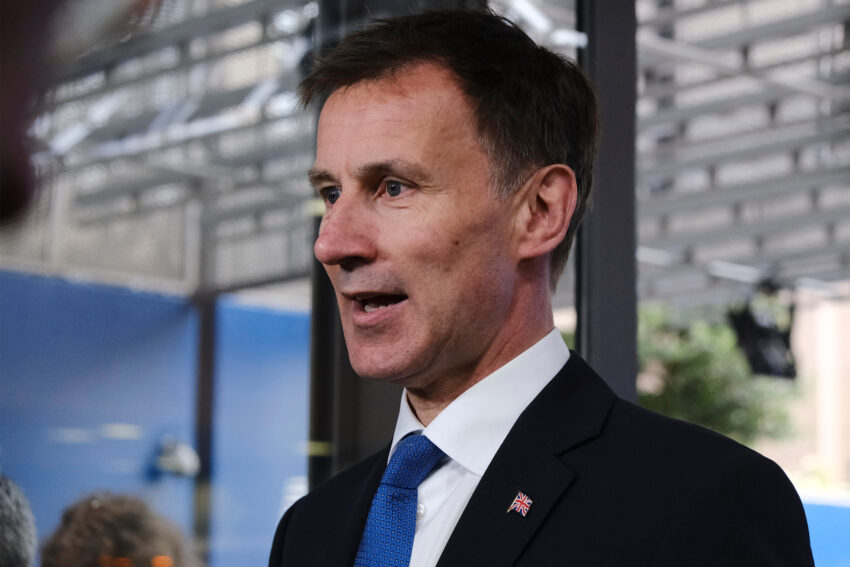More Britons will pay higher rates of tax after the autumn state as Jeremy Hunt announce he was freezing allowances for two further years and cutting the threshold for the 45p top rate.
The chancellor said cutting the starting point for the top rate from earnings of £150,000 to £125,140 would see the wealthiest paying an extra £1,200 each year.
Alex Davies, CEO and Founder of Wealth Club said: “However necessary, today’s announcement is brutal for higher earners and investors. Around 250,000 more people will be paying the top rate of tax, many allowances will be frozen until 2028 and the dividend and capital gains tax allowances are being slashed.
The good news is there are still plenty of perfectly legitimate ways you can reduce the tax you pay, from investing in pension and ISAs to crystallising capital gains liabilities now rather than next year. If you are prepared to take more risk, consider investing in early-stage businesses through VCTs, EIS and SEIS. Not only are they very tax efficient, but also your money goes to entrepreneurial companies, which is great for economic growth and job creation.”
Use your ISA allowance
Individuals can save £20,000 into their ISA each year. Any income and capital gains generated from within the ISA are free of income and capital gains taxes, although investors should still watch out for inheritance tax.
Use your Capital Gains Tax Allowance
Currently, Individuals have a £12,300 annual capital gains tax allowance, meaning investors can make £12,300 in capital gains before becoming liable for capital gains tax. This allowance drops to £6,000 from April 2023, and to £3,000 from April 2024. The message is clear, use it or lose it. Investors in funds who are happy with their portfolio could consider selling a fund that’s performed well and buying something very similar, for instance you sell one US equity tracker and buy another.
Use your pension
Higher and additional rate taxpayers will breathe a sigh of relief to see pension tax reliefs are unchanged. Saving into a pension remains the go-to tax-efficient savings vehicle. Receiving pension tax relief at one’s marginal rate of income tax means topping up a pension by £100 costs a higher rate taxpayer £60, and £55 for an additional rate taxpayer. This generous relief may not be around forever, so make sure to use it while you can. Beaware of the Annual Allowance and Life Time Allowance before investing.
Look beyond pensions and ISAs to save up to 50% income and capital gains tax
Pensions and ISAs are great, but the allowances can be restrictive for some. To mitigate this, if you’re prepared to take extra risk, you could look to the government’s venture capital schemes. Each offers a different mix of tax benefits. Which you go for will largely depend on circumstances and how much risk you’re prepared to take. As a rule of thumb, the greater the tax benefits, the higher the risk.
- Venture Capital Trusts (VCTs) offer up to 30% income tax relief. Returns are paid through regular tax-free dividends, which is a nice bonus. The allowance is a very respectable £200,000 a year.
- Enterprise Investment Scheme (EIS) investments also offer up to 30% income tax relief. There are no tax-free dividends, but one bonus here is that you can also defer chargeable capital gains you’ve realised. For as long as you stay invested in any EIS, you can forget about the CGT bill. It will only become payable once you come out of the EIS, unless you re-invest the money into another. The allowance is a whopping £1 million a year or £2 million if you invest at least £1 million into “knowledge intensive” companies.
- The Seed Enterprise Investment Scheme (SEIS) is the real winner when it comes to tax savings. When you invest you can cut both your income and capital gains tax in half. The allowance is a more modest but still extremely generous £200,000. A £200,000 investment could save you up to £100,000 income tax plus £28,000 capital gains tax.
Protect as much as possible of your portfolio from IHT
Pensions can be passed on to the next generation relatively tax efficiently. EIS and SEIS investments should be IHT free after two years too. The greatest IHT threat probably comes from where you least expect it: your ISA. Contrary to what many think, ISAs are not IHT free. So, if you do nothing, up to 40% of your fund could eventually be eaten up by tax. An alternative is to invest in an AIM ISA, a managed portfolio of AIM shares that can be IHT free after two years. You still get the ISA benefits of tax-free income and growth for as long as you live, but you don’t need to worry about IHT on top.


